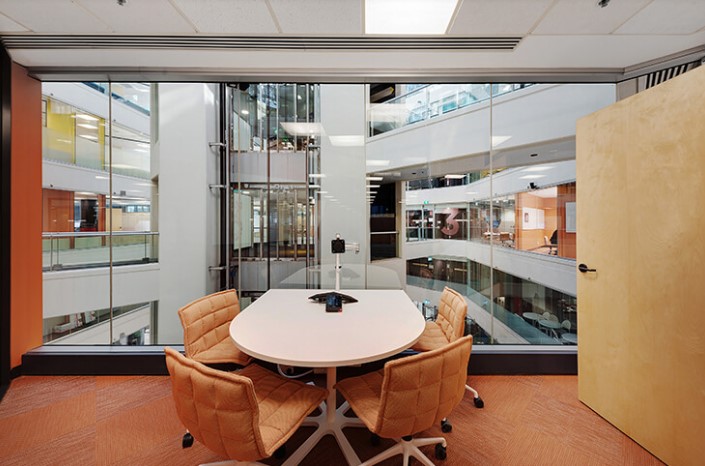Collaboration has become the cornerstone of success in today’s fast-paced and interconnected world. Organisations increasingly realise the value of collaborative workspaces in fostering employee teamwork, creativity, and productivity. These innovative environments are purposefully designed to facilitate communication, idea sharing, and collaboration, making them essential for businesses striving for excellence. One crucial aspect of creating an effective collaborative workspace is selecting the right office furniture that supports and enhances teamwork. Furthermore, to maximise team productivity and unleash the true potential of collaborative workspaces, here is a range of furniture ideas that can be implemented. Continue reading!
Versatile Workstations
The traditional concept of fixed individual workstations gradually evolves to accommodate collaborative work styles. Versatile workstations are a great addition to collaborative workspaces as they offer flexibility and adaptability. These workstations can be rearranged to create different configurations based on team requirements. Adjustable desks, modular partitions, and movable furniture pieces allow teams to reconfigure their workspace quickly, enabling seamless collaboration and brainstorming sessions.
Collaborative Tables
Collaborative tables are central to fostering teamwork and communication in collaborative workspaces. These tables are designed to accommodate multiple team members, allowing them to sit together and work collaboratively. Circular or rectangular tables with built-in power outlets, data ports, and cable management solutions are ideal for supporting collaborative activities. Additionally, tables with height-adjustable features enable employees to switch between sitting and standing positions, promoting better ergonomics and overall well-being.
Lounge Areas
Creating comfortable lounge areas within a collaborative workspace can positively impact team productivity. These areas serve as informal meeting spots where team members can relax, engage in casual discussions, or brainstorm ideas in a more relaxed setting. Comfortable sofas, bean bags, and ottomans can be strategically placed in these areas to encourage informal collaboration and idea generation. Integrating whiteboards or mobile whiteboard walls near lounge areas provide a convenient space for jotting ideas or visualising concepts during impromptu brainstorming sessions.
Mobile Furniture
Mobility is a key attribute in collaborative workspaces, allowing for easy adaptability and reconfiguration. Mobile furniture items like rolling whiteboards, portable projectors, and flexible seating options offer the freedom to transform the workspace based on the team’s needs. Wheeled storage units and movable partitions can also be incorporated to create temporary boundaries or storage areas, ensuring a dynamic and collaborative work environment.
Huddle Rooms
Huddle rooms are small, private meeting spaces facilitating focused discussions and smaller group collaboration. Equipped with video conferencing technology, large displays, and comfortable seating, these rooms offer privacy while encouraging teamwork. Huddle rooms can be furnished with ergonomic chairs, adjustable tables, and whiteboards for effective brainstorming and problem-solving sessions. Organisations can enhance productivity and promote efficient decision-making by providing dedicated spaces for smaller teams to collaborate.
Collaborative Storage Solutions
Efficient storage solutions are essential for maintaining an organised and clutter-free collaborative workspace. Collaborative storage options, such as shared shelving units, lockers, and mobile storage carts, enable teams to conveniently store and access their materials. Open shelving units with labelled compartments promote transparency and easy access to shared resources. By integrating storage solutions into the collaborative workspace design, teams can focus on their work without the distraction of clutter.
Technology Integration
In today’s digital age, integrating technology into collaborative workspaces is crucial. Large displays, video conferencing systems, and interactive whiteboards enhance communication and collaboration among team members, whether physically present or working remotely. Wireless charging stations and power outlets strategically placed throughout the workspace ensure easy access to technology and help keep devices powered up.
Conclusion
Creating a productive collaborative workspace requires thoughtful planning and office furniture selection. By incorporating various solutions, organisations can create an environment that encourages collaboration, boosts team productivity, and fosters innovation. Investing in furniture that supports teamwork and communication improves employee satisfaction and enhances overall organisational performance in today’s collaborative work culture.

Aretha Davis, the wordsmith extraordinaire, weaves enchanting tales with her pen and keyboard. A renowned blogger and writer, her captivating prose transports readers to realms unknown. Join her literary journey and be swept away by the magic of her words.
